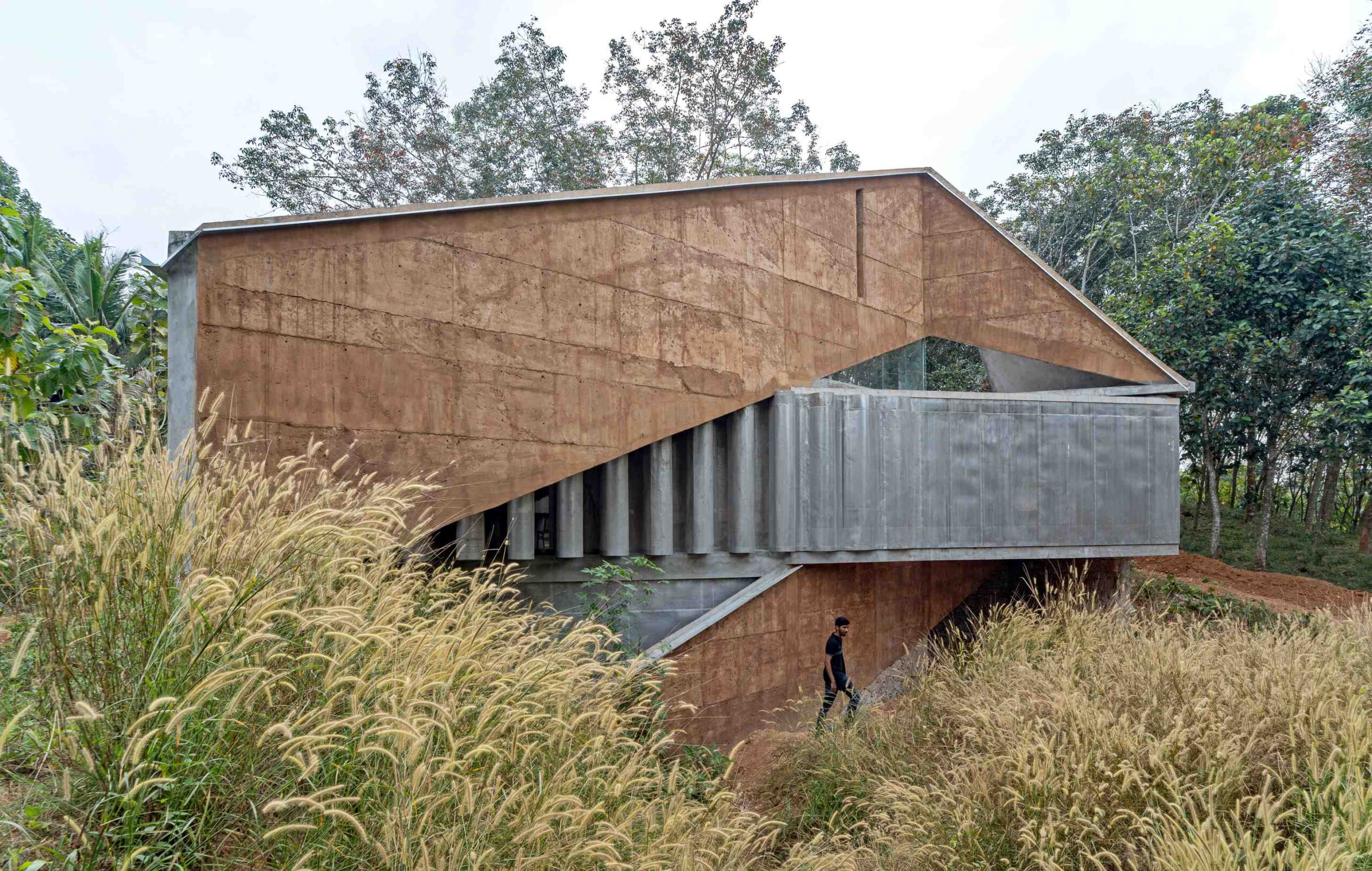
Set against one of the silent hilltops of Trivandrum, the site was located at the highest point in that particular part of the wood, set into the lovely hilltop. However, being a west-facing site one would have to hold up a hand to shield their eyes from the harsh west sun. That ‘hand’ was reimagined as a slanting wall along the site giving birth to the concept of conceiving the residence as – Shikhara ( Peak). The wall, brutal but a shade from the harsh heat and direct sunlight was to be made from the materials procured from the land itself and construction debris. The patented technique of SHOBRI was used here. As the major length of the building ran along the West side as a solid wall with small openings, lack of cross ventilation posed a new problem. After foraging in the market the answer rose in the form of Aluminium coin sheets that were perforated to let in light and air. An undulating pattern was worked out on it so that this facade doubled up to become the staircase and answer the security concerns.
Drawings:
















